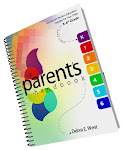Helping Your Child With Math: Part 2
Article by: Swankymoms.com
School has begun! Which means your child is probably bringing home art projects, exciting stories about her day at school and... homework! The good news it that most elementary math programs consist of the same basic activities (counting, patterning, sorting, graphing, etc.). By brushing up on these basic areas and learning a few tricks to share with your child, you can help your little one feel confident with these math concepts when she comes home with her number recognition worksheets, counting worksheets, patterning worksheets, sorting and classifying worksheets, or graphing worksheets and help her become a true math-lete. Below are tips on sorting and classifying and graphing.
Sorting and Classifying
Sorting involves recognizing a characteristic that items have in common and grouping them together. Sorting is a skill that adults and children use everyday. Organizing a desk or locker, emptying a dishwasher, putting away clean clothes, and on and on. So it is a great idea to give your little guy opportunities to sort.
Start by showing your child a group of items that differ in only one way - color, size, shape or texture. For example, the same sock used for patterning can be sorted by color into two piles. Or two kinds of buttons can be sorted by size - large vs. small. Show your child how you are dividing the groups based on a specific characteristic and encourage him to continue.
Classifying is simply naming the characteristic that guides the sorting activity. So encourage your child to talk about why he is separating the piles a certain way.
Graphing
Graphing is a way to visually represent amounts of items being counted. Children will see that a graph gives them instant information, so it can be a big time saver when comparing groups. Tell your child that this is a kind of shortcut and he’ll get on board!
A simple way to introduce graphs is to take a poll, asking friends and family members for an answer to a question. A yes or no question makes the poll easy to take and read. You might ask: “Do you like watching football?” or “Do you like to take naps?” Draw two columns side-by-side and divide them into equal-sized sections.
Write YES under the first column and NO under the second. Then let your child mark an X in the appropriate box to record each answer he is given. A question with two or three possible answers works well also. “Which dessert do you like more - pie, cake, or ice cream?”
Finally, talk about the graph with your child. Can he tell you which answer had the most responses? Which answer had the least? Were the amounts equal?
Math activities can be fun and educational!
For more information on helping your child succeed in school, visit www.schoolsparks.com. There you will find a kindergarten readiness test parents can take to see if their kids are ready to start preschool or kindergarten and hundreds of free printable kindergarten worksheets to help children develop critical skills.










0 comments:
Post a Comment